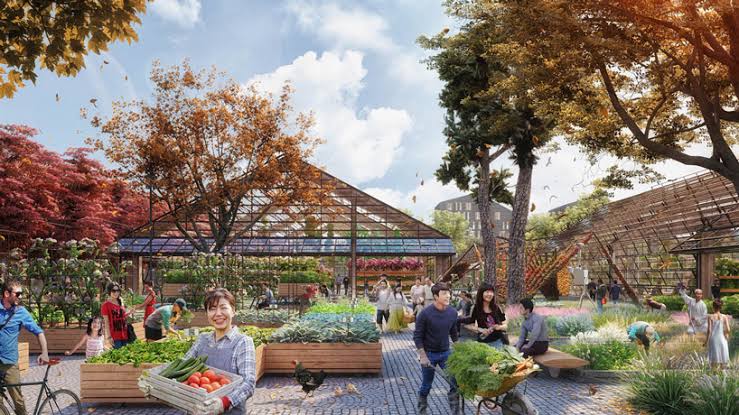Xiong'an New Area: China's Ambitious Leap into the Future of Finance and Innovation
Emerging from the tranquility of North China's Hebei Province, the Xiong'an New Area represents an ambitious endeavor to redefine the paradigms of urban development and establish a global center for finance, innovation, and technology. As one of the strategic visions of the Chinese government, Xiong'

Emerging from the tranquility of North China's Hebei Province, the Xiong'an New Area represents an ambitious endeavor to redefine the paradigms of urban development and establish a global center for finance, innovation, and technology. As one of the strategic visions of the Chinese government, Xiong'an is envisaged to harness advanced technologies such as artificial intelligence (AI), big data, and cloud computing to transform into a futuristic city that mirrors China's growing global influence and technological prowess.
The Birth of a Vision
Announced in 2017, the plan to develop Xiong'an New Area is an integral component of China's strategy to promote regional integration in the Beijing-Tianjin-Hebei cluster and balance development across its territories. The city is being constructed around three existing counties in Hebei province, located about 100 kilometers southwest of Beijing. The location was carefully chosen to alleviate the overpopulation and congestion challenges that have plagued China's capital city for decades.
The Pillars of Xiong'an
Two key strategic goals underpin the design of Xiong'an: becoming a global finance hub and transforming into an innovation powerhouse.
In the global finance arena, the goal is to position Xiong'an as an alternative to traditional financial centers such as Shanghai and Shenzhen. By creating a supportive regulatory environment and leveraging emerging technologies, Xiong'an aims to attract major financial institutions and foster the growth of fintech startups. The city's developers believe that this strategic focus on finance will spur economic growth, create jobs, and promote regional integration.
The second strategic goal revolves around fostering innovation. Xiong'an is being designed as a "Smart City", leveraging emerging technologies to streamline city management, enhance the quality of life, and catalyze economic growth. Artificial intelligence, big data, and cloud computing are the trinity of technologies being harnessed to achieve this vision.
Artificial Intelligence
AI is playing a pivotal role in Xiong'an's transformation. The city is deploying AI in a wide array of applications ranging from urban planning and transportation to healthcare and public safety. For instance, AI-powered surveillance systems will enhance security, while AI-based traffic management systems will alleviate congestion and streamline transportation.
Big Data
The massive amount of data generated in a city like Xiong'an offers enormous potential to enhance city management, economic development, and public services. Big data analytics is being used to extract valuable insights from this data to inform policy decisions, optimize resource allocation, and improve service delivery.
Cloud Computing
Cloud computing is the backbone supporting Xiong'an's digital transformation. It provides the computational power needed to run sophisticated AI algorithms and big data analytics. Moreover, cloud platforms enable seamless collaboration and data sharing among various city departments, businesses, and citizens, thus fostering a more connected and efficient city.
Education and Research Institutions
Complementing its financial and technological aspirations, Xiong'an is also striving to become a center for education and research. Several universities, including prestigious institutions such as Peking University and Tsinghua University, have announced plans to set up campuses in Xiong'an. These institutions will not only provide high-quality education to the city's residents but will also contribute to its innovation ecosystem through research and development activities.
Challenges and Opportunities
Despite its ambitious plans, Xiong'an faces a multitude of challenges. These include the task of attracting top talent, fostering a vibrant innovation ecosystem, and ensuring sustainable development. However, the city also represents a unique opportunity to create a new model of urban development that seamlessly integrates finance, innovation, and technology.
Conclusion
Xiong'an New Area, with its ambitious vision to become a global hub for finance and innovation, stands as a testament to China's aspiration to lead in the global digital economy. It represents a new breed of city, one built from the ground up with a focus on sustainability, digital technologies, and human-centric design. As the city continues to evolve, it offers a compelling glimpse into the future of urban development, not only in China but around the world.




